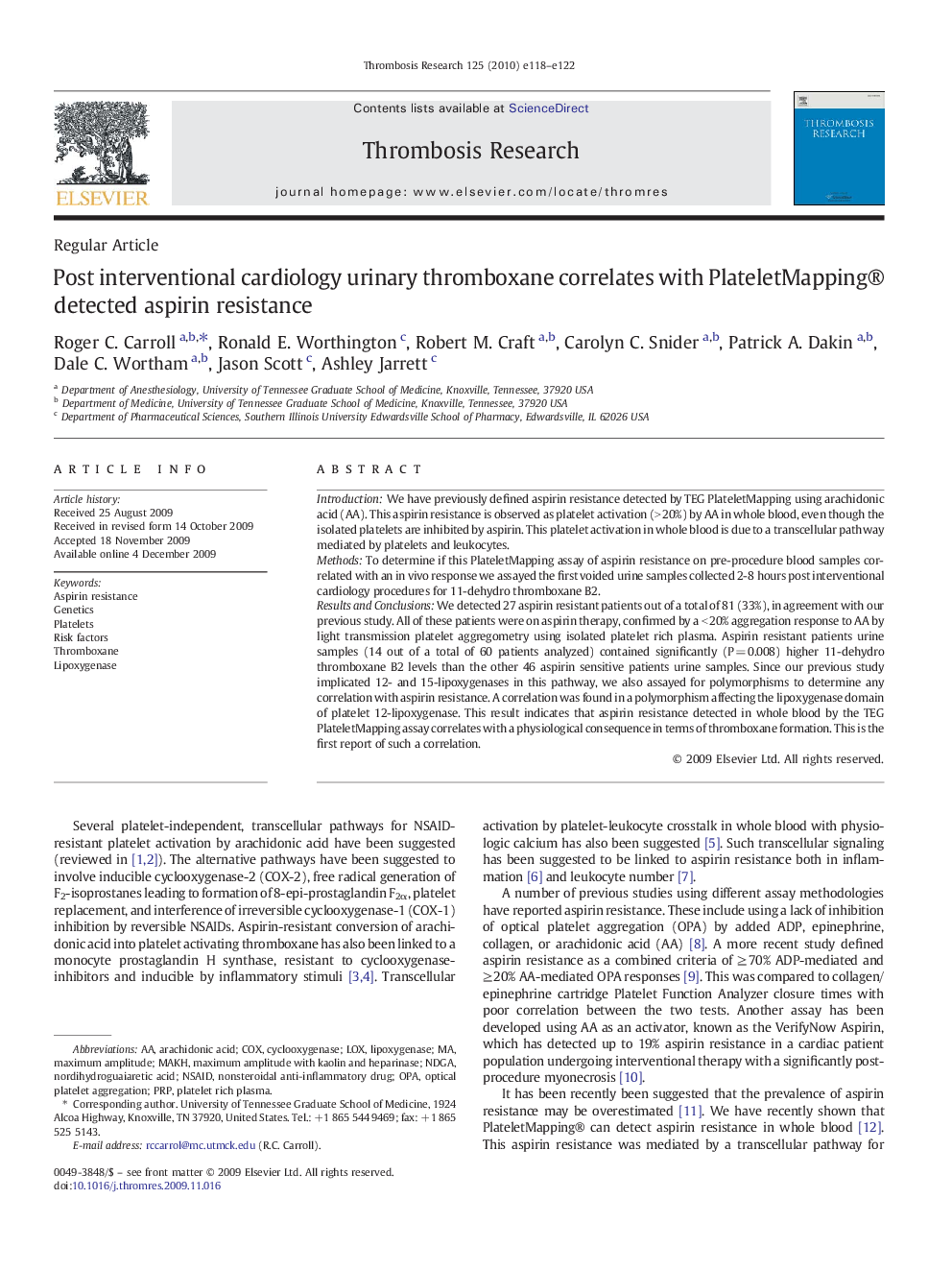| Article ID | Journal | Published Year | Pages | File Type |
|---|---|---|---|---|
| 3027909 | Thrombosis Research | 2010 | 5 Pages |
IntroductionWe have previously defined aspirin resistance detected by TEG PlateletMapping using arachidonic acid (AA). This aspirin resistance is observed as platelet activation (> 20%) by AA in whole blood, even though the isolated platelets are inhibited by aspirin. This platelet activation in whole blood is due to a transcellular pathway mediated by platelets and leukocytes.MethodsTo determine if this PlateletMapping assay of aspirin resistance on pre-procedure blood samples correlated with an in vivo response we assayed the first voided urine samples collected 2-8 hours post interventional cardiology procedures for 11-dehydro thromboxane B2.Results and ConclusionsWe detected 27 aspirin resistant patients out of a total of 81 (33%), in agreement with our previous study. All of these patients were on aspirin therapy, confirmed by a < 20% aggregation response to AA by light transmission platelet aggregometry using isolated platelet rich plasma. Aspirin resistant patients urine samples (14 out of a total of 60 patients analyzed) contained significantly (P = 0.008) higher 11-dehydro thromboxane B2 levels than the other 46 aspirin sensitive patients urine samples. Since our previous study implicated 12- and 15-lipoxygenases in this pathway, we also assayed for polymorphisms to determine any correlation with aspirin resistance. A correlation was found in a polymorphism affecting the lipoxygenase domain of platelet 12-lipoxygenase. This result indicates that aspirin resistance detected in whole blood by the TEG PlateletMapping assay correlates with a physiological consequence in terms of thromboxane formation. This is the first report of such a correlation.
